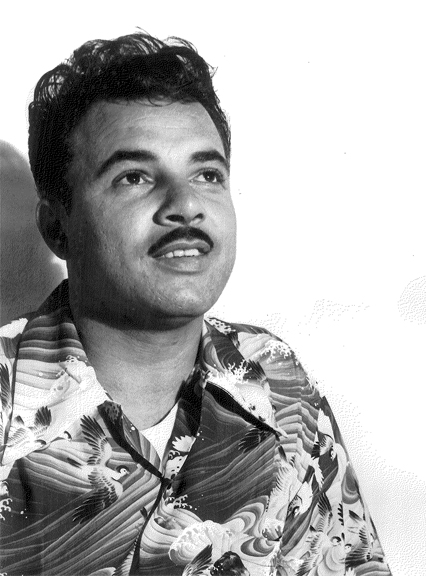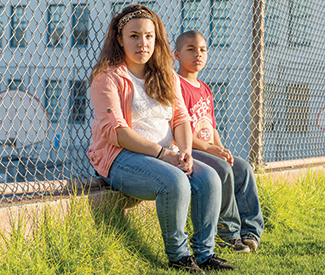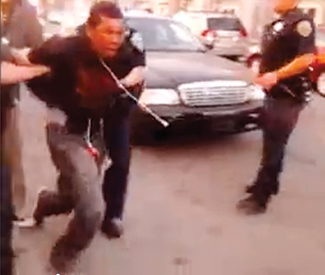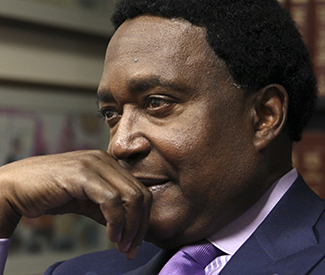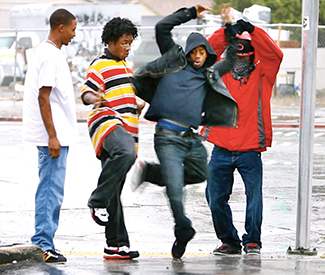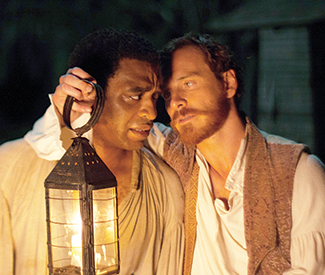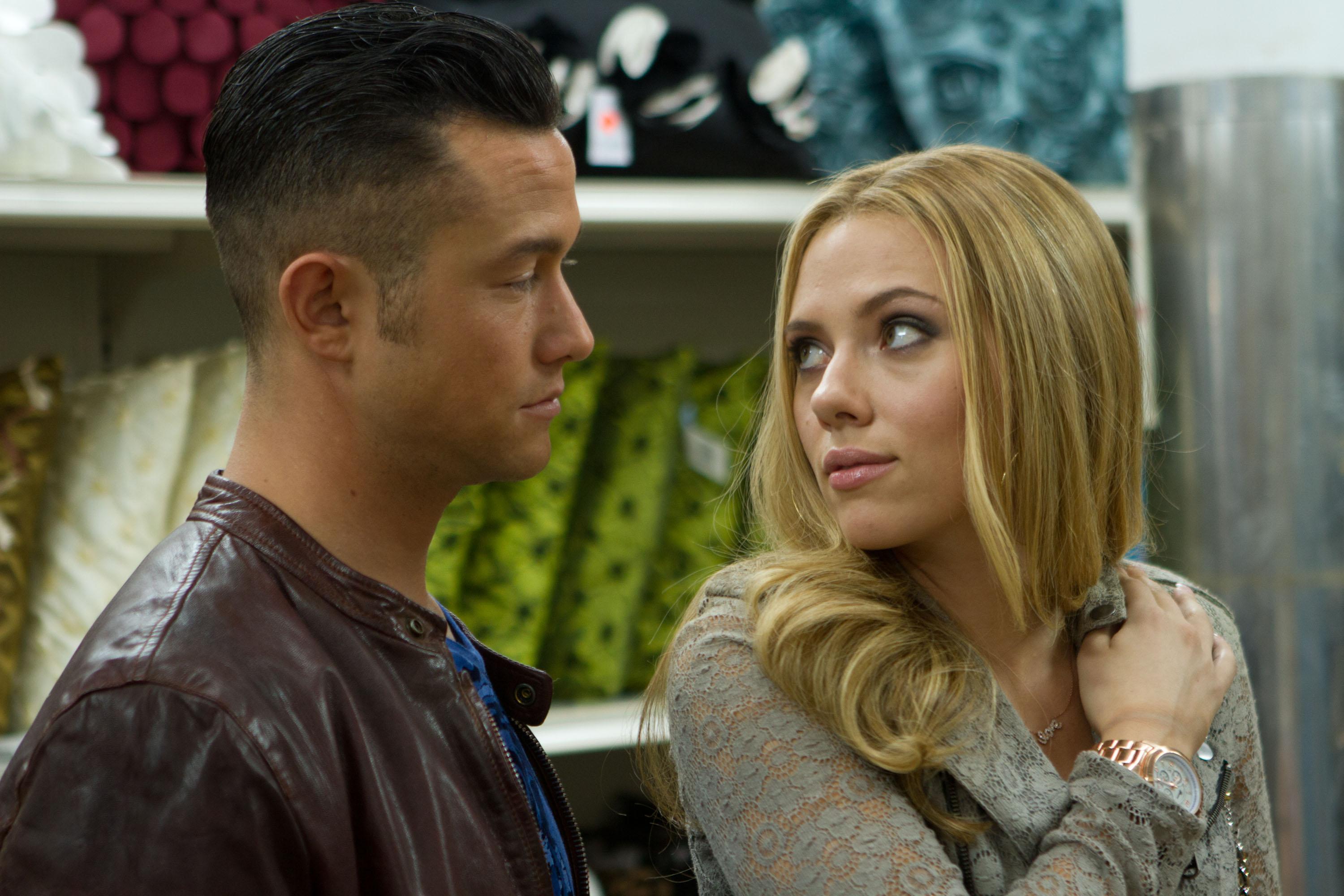WEDNESDAY 27
ROCK
Bottom of the Hill: 1233 17th St., San Francisco. BFF.fm Launch Party, w/ The Happy Hollows, Deep Dimension, Kitten Grenade, DJ Jackson Sandland, 9 p.m., $10.
Brick & Mortar Music Hall: 1710 Mission, San Francisco. Solwave, Vanaprasta, Coo Coo Birds, 9 p.m., $10-$12.
Hotel Utah: 500 Fourth St., San Francisco. The Straight Ups, The Real Deal, 9 p.m., $6.
The Independent: 628 Divisadero, San Francisco. The Limousines, Mona, Dresses, 8 p.m., $15.
The Knockout: 3223 Mission, San Francisco. Unruly Things, Not Sure. Not Yet, Oceanography, 9:30 p.m., $6.
Slim’s: 333 11th St., San Francisco. Morbid Angel (playing Covenant), Rude, Blasphemous Creation, 9 p.m., $28.
Sub-Mission Art Space (Balazo 18 Gallery): 2183 Mission, San Francisco. Don’t Be a Hero, Parkside, The Truth Is …, The Temps, The Fourth & King, 8 p.m., $5-$8.
DANCE
Audio Discotech: 316 11th St., San Francisco. “Trancegiving,” w/ Kristina Sky, Mitka, SNR, Ryan Mendoza, 9:30 p.m., $10 advance.
BeatBox: 314 11th St., San Francisco. “Bassgiving,” w/ Dulce Vita, Simple Greene, Influence, Dr. Whiskers, Skywise, 9 p.m., $5-$10.
Bruno’s: 2389 Mission, San Francisco. “Black Wednesday: Pre-Thanksgiving Bash,” w/ DJs Miles Medina, Yo Yolie, Charly Fusion, Marv, and EMT, 9 p.m., $10 (free with RSVP).
Cafe Du Nord: 2170 Market, San Francisco. “Dark Sparkle,” w/ DJ Sage & Miz Margo, 10 p.m., $5.
The Cafe: 2369 Market, San Francisco. “Sugar: Thanksgiving Eve,” 9 p.m.
Cat Club: 1190 Folsom, San Francisco. “Bondage A Go Go,” w/ DJs Damon, Tomas Diablo, & guests, 9:30 p.m., $5-$10.
Club X: 715 Harrison, San Francisco. “Electro Pop Rocks,” 18+ dance night with Vaski & Schoolboy, 9 p.m., $10-$20.
Edinburgh Castle: 950 Geary, San Francisco. “1964,” w/ DJ Matt B & guests, Second and Fourth Wednesday of every month, 10 p.m., $2.
Elbo Room: 647 Valencia, San Francisco. “Bodyshock,” w/ Lust for Youth, Hive Mind, plus DJs Justin, Crackwhore, and Blk Rainbow, 9 p.m., $7.
The EndUp: 401 Sixth St., San Francisco. “Tainted Techno Trance,” 10 p.m.
F8: 1192 Folsom St., San Francisco. “Housepitality: Pre-Turkey Day Special,” w/ Tyree Cooper, Matrixxman, Vin Sol, Bai-ee, J.P. Soul, 9 p.m., $5-$10.
Harlot: 46 Minna, San Francisco. “Qoöl,” 5 p.m.
Infusion Lounge: 124 Ellis, San Francisco. “Indulgence,” 10 p.m.
Lookout: 3600 16th St., San Francisco. “What?,” w/ resident DJ Tisdale and guests, 7 p.m., free.
Madrone Art Bar: 500 Divisadero, San Francisco. “Rock the Spot,” 9 p.m., free.
MatrixFillmore: 3138 Fillmore, San Francisco. “Reload,” w/ DJ Big Bad Bruce, 10 p.m., free.
Mezzanine: 444 Jessie, San Francisco. “Lights Down Low,” w/ Azari & III (DJ set), Myles Cooper, Split, Richie Panic, Sleazemore, 9 p.m., $17.
Monarch: 101 6th St., San Francisco. “Fullyloaded: A Pre-Thanksgiving Get Down,” w/ Ardalan, Galen, Solar, DJ M3, DJ Omar, Mozhgan, Cole, 9 p.m., $5-$10.
Public Works: 161 Erie, San Francisco. 4 All Tour, w/ Nadastrom, Salva, Sinden, Deejay Theory (in the main room), 9 p.m., $12-$15.
Q Bar: 456 Castro, San Francisco. “Booty Call,” w/ Juanita More, Joshua J, guests, 9 p.m., $3.
Ruby Skye: 420 Mason, San Francisco. Cosmic Gate, 9 p.m., $25-$35 advance.
Supperclub San Francisco: 657 Harrison, San Francisco. “Foam for the Holidays,” w/ DJs Chris White & Jimmy Bell, 10 p.m., $15-$20.
HIP-HOP
Manor West: 750 Harrison, San Francisco. “Black Wednesday: Pre-Thanksgiving Event,” w/ DJs J. Espinosa, J-Trip, and Acme, 10 p.m.
Skylark Bar: 3089 16th St., San Francisco. “Mixtape Wednesday,” w/ resident DJs Strategy, Junot, Herb Digs, & guests, 9 p.m., $5.
Slate Bar: 2925 16th St., San Francisco. “Special Blend,” w/ DJs Max Kane, Roman Nunez, LazyBoy, and Mr. Murdock, 9 p.m., free.
ACOUSTIC
Bazaar Cafe: 5927 California, San Francisco. Bryce Wilson, 7 p.m.
Cafe Divine: 1600 Stockton, San Francisco. Craig Ventresco & Meredith Axelrod, 7 p.m., free.
Club Deluxe: 1511 Haight, San Francisco. Happy Hour Bluegrass, 6:30 p.m., free.
Johnny Foley’s Irish House: 243 O’Farrell St., San Francisco. Terry Savastano, Every other Wednesday, 9 p.m., free.
Milk Bar: 1840 Haight, San Francisco. KnightressM1, Rabbit Quinn, Yonat Mayer, 8:30 p.m., $7.
Plough & Stars: 116 Clement, San Francisco. The Toast Inspectors, Last Wednesday of every month, 9 p.m.
JAZZ
Amnesia: 853 Valencia, San Francisco. Gaucho, Eric Garland’s Jazz Session, The Amnesiacs, 7 p.m., free.
Burritt Room: 417 Stockton St., San Francisco. Terry Disley’s Rocking Jazz Trio, 6 p.m., free.
Jazz Bistro at Les Joulins: 44 Ellis, San Francisco. Charles Unger Experience, 7:30 p.m., free.
Le Colonial: 20 Cosmo, San Francisco. The Cosmo Alleycats featuring Ms. Emily Wade Adams, 7 p.m., free.
Martuni’s: 4 Valencia, San Francisco. Tom Shaw Trio, Last Wednesday of every month, 7 p.m., $7.
Savanna Jazz Club: 2937 Mission, San Francisco. “Cat’s Corner,” 9 p.m., $10.
Sheba Piano Lounge: 1419 Fillmore, San Francisco. Steve Snelling, 8 p.m.
Top of the Mark: One Nob Hill, 999 California, San Francisco. Ricardo Scales, Wednesdays, 6:30-11:30 p.m., $5.
Zingari: 501 Post, San Francisco. Anya Malkiel, 7:30 p.m., free.
INTERNATIONAL
Bissap Baobab: 3372 19th St., San Francisco. Timba Dance Party, w/ DJ WaltDigz, 10 p.m., $5.
Cafe Cocomo: 650 Indiana, San Francisco. “Bachatalicious,” w/ DJs Good Sho & Rodney, 7 p.m., $5-$10; Fifth Annual Pre-Thanksgiving Party, w/ Julio Bravo y Su Orquesta Salsabor, plus DJs Super Chino, MGD, Flako, and Mambo, 9 p.m.
Make-Out Room: 3225 22nd St., San Francisco. “International Freakout A Go-Go,” w/ DJs Ben Bracken, Moon Bowl, and Bobby Ganush, 10 p.m., free.
The Rite Spot Cafe: 2099 Folsom, San Francisco. Redwood Tango Ensemble, 8:30 p.m., free.
Yoshi’s San Francisco: 1330 Fillmore, San Francisco. International String Trio, 8 p.m., $17-$21.
BLUES
Biscuits and Blues: 401 Mason, San Francisco. HowellDevine, 7:30 & 9:30 p.m., $15.
The Saloon: 1232 Grant, San Francisco. Craig Horton, 9:30 p.m.
SOUL
The Royal Cuckoo: 3202 Mission, San Francisco. Freddie Hughes & Chris Burns, 7:30 p.m., free.
THURSDAY 28
DANCE
Aunt Charlie’s Lounge: 133 Turk, San Francisco. “Tubesteak Connection,” w/ DJ Bus Station John, 9 p.m., $5-$7.
The Cafe: 2369 Market, San Francisco. “¡Pan Dulce!,” 9 p.m., $5.
Cat Club: 1190 Folsom, San Francisco. “Throwback Thursdays,” ‘80s night with DJs Damon, Steve Washington, Dangerous Dan, and guests, 9 p.m., $6 (free before 9:30 p.m.).
The Cellar: 685 Sutter, San Francisco. “XO,” w/ DJs Astro & Rose, 10 p.m., $5.
Elbo Room: 647 Valencia, San Francisco. “Afrolicious,” w/ DJs Pleasuremaker, Señor Oz, and live guests, 9:30 p.m., $5-$8.
Madrone Art Bar: 500 Divisadero, San Francisco. “Night Fever,” 9 p.m., $5 after 10 p.m.
Q Bar: 456 Castro, San Francisco. “Throwback Thursday,” w/ DJ Jay-R, 9 p.m., free.
Raven: 1151 Folsom St., San Francisco. “1999,” w/ VJ Mark Andrus, 8 p.m., free.
Ruby Skye: 420 Mason, San Francisco. Morgan Page, Beltek, Topher Jones, 9 p.m.
Underground SF: 424 Haight, San Francisco. “Bubble,” 10 p.m., free.
HIP-HOP
Eastside West: 3154 Fillmore, San Francisco. “Throwback Thursdays,” w/ DJ Madison, 9 p.m., free.
The EndUp: 401 Sixth St., San Francisco. “Cypher,” w/ resident DJ Big Von, 10 p.m., $5-$10.
John Colins: 138 Minna, San Francisco. “#Quattro,” w/ DJ Dino, Fourth Thursday of every month, 9 p.m.
Mezzanine: 444 Jessie, San Francisco. “Cream of Beat: Reunion Party 2013, Part 2,” w/ Masta Ace, Spice 1, Mind Motion, DJ Ivan, Rolo 1-3, Dark Money, DJ Apollo, DJ Fuze, Big Von, Scotty Foxx, 9 p.m., $20-$60.
Skylark Bar: 3089 16th St., San Francisco. “Peaches,” w/lady DJs DeeAndroid, Lady Fingaz, That Girl, Umami, Inkfat, and Andre, 10 p.m., free.
JAZZ
Bottle Cap: 1707 Powell, San Francisco. The North Beach Sound with Ned Boynton, Jordan Samuels, and Tom Vickers, 7 p.m., free.
The Royal Cuckoo: 3202 Mission, San Francisco. Charlie Siebert & Chris Siebert, 7:30 p.m., free.
Savanna Jazz Club: 2937 Mission, San Francisco. Savanna Jazz Jam with Eddy Ramirez, 7:30 p.m., $5.
Top of the Mark: One Nob Hill, 999 California, San Francisco. Thanksgiving Brunch & Dinner Buffet with Michael Athans & Ricardo Scales, 11 a.m.-8 p.m., $59-$109.
Zingari: 501 Post, San Francisco. Brenda Reed, 7:30 p.m., free.
BLUES
The Saloon: 1232 Grant, San Francisco. T-Wrex & The Primitive Rhythm, 4 p.m.; Chris Cobb, 9:30 p.m.
COUNTRY
The Parlor: 2801 Leavenworth, San Francisco. “Twang Honky Tonk & Country Jamboree,” w/ DJ Little Red Rodeo, 7 p.m., free.
FRIDAY 29
ROCK
50 Mason Social House: 50 Mason, San Francisco. The Ever After, Bellygunner, Felsen, State to State, The Palace Ballroom, 8 p.m., $10.
Bottom of the Hill: 1233 17th St., San Francisco. Ancient Mariner, Crüella, Mexican Steel, 9:30 p.m., $10.
The Chapel: 777 Valencia St., San Francisco. I Need You Bad: The Live Show, w/ Little Wings, Chris Cohen, The Memories, Fronds, DJ Sonny Smith, 8 p.m., $12-$15.
Hemlock Tavern: 1131 Polk, San Francisco. Life Stinks, Quaaludes, Dancer, 9:30 p.m., $5.
Hotel Utah: 500 Fourth St., San Francisco. Ocelot, Skinny Guns, Mr. Turkey, RDR, 9 p.m., $8.
Slim’s: 333 11th St., San Francisco. Less Than Jake, Anti-Flag, Masked Intruder, Get Dead, 7:30 p.m., $26.
DANCE
1015 Folsom: 1015 Folsom St., San Francisco. Official Pretty Lights After-Party featuring Cut Chemist, Eliot Lipp, N.A.S.A., Marvel Years, Beni Haze, Bogl vs. Dials, Little John, Balance, 10 p.m., $20-$25.
Audio Discotech: 316 11th St., San Francisco. “The Pilgrim Party: Post-Thanksgiving Bash,” w/ Jessie Andrews, 10 p.m., $10 advance.
BeatBox: 314 11th St., San Francisco. “Hummer,” w/ DJs Mark Loque & Robert Jeffrey, 9 p.m., $7-$10.
Cafe Flore: 2298 Market, San Francisco. “Kinky Beats,” w/ DJ Sergio, 10 p.m., free.
The Cafe: 2369 Market, San Francisco. “Boy Bar,” w/ DJ Matt Consola, 9 p.m., $5.
Cat Club: 1190 Folsom, San Francisco. “Dancing Ghosts: 4AD vs. Mute Records,” w/ DJs Xander, Miz Margo, Orko, and Sage, 9:30 p.m., $7 ($3 before 10 p.m.).
The Cellar: 685 Sutter, San Francisco. “F.T.S.: For the Story,” 10 p.m.
DNA Lounge: 375 11th St., San Francisco. “Trap & Bass,” 18+ dance party with Butch Clancy, UltraViolet, Napsty, 9 p.m., $10-$20.
The EndUp: 401 Sixth St., San Francisco. “Fever,” 10 p.m., free before midnight.
The Grand Nightclub: 520 4th St., San Francisco. “We Rock Fridays,” 9:30 p.m.
The Independent: 628 Divisadero, San Francisco. Jon Hopkins, Clark, Nathan Fake, 9 p.m., $18-$20.
Infusion Lounge: 124 Ellis, San Francisco. “Escape Fridays,” 10 p.m., $20.
John Colins: 138 Minna, San Francisco. “Funky Friday,” w/ DJs Teeko & Julicio, 10 p.m., $5.
Lookout: 3600 16th St., San Francisco. “HYSL,” 9 p.m., $3.
Madrone Art Bar: 500 Divisadero, San Francisco. Groove Merchant Records Night, w/ DJs Cool Chris, Jerry Nice, Vinnie Esparza, and Jon Blunk, 9:30 p.m., $5.
Manor West: 750 Harrison, San Francisco. “Fortune Fridays,” 10 p.m., free before 11 p.m. with RSVP.
MatrixFillmore: 3138 Fillmore, San Francisco. “F-Style Fridays,” w/ DJ Jared-F, 9 p.m.
Mezzanine: 444 Jessie, San Francisco. Nightmares on Wax, 9 p.m., $20.
Mighty: 119 Utah, San Francisco. “Tribal Funk: 20-Year Family Reunion,” w/ Donald Glaude, Stacey Pullen, John Howard, Jenö, Tony, Rooz, Sharon Buck, Seven, Sean Murray, Dan Suda, George Didescu, 9 p.m., $15-$25.
Monarch: 101 6th St., San Francisco. “Lazy Days,” w/ Fred Everything, Paolo Rocco, Joey Alaniz, 9:30 p.m., $12-$15.
OMG: 43 6th St., San Francisco. “Release,” 9 p.m., free before 11 p.m.
Public Works: 161 Erie, San Francisco. “Mixologi Presents: Remember the Soundtrack,” w/ DJs Mackswell, Timoteo Gigante, and Wonway Posibul, 10 p.m., $10-$20.
Q Bar: 456 Castro, San Francisco. “Pump: Worq It Out Fridays,” w/ resident DJ Christopher B, 9 p.m., $3.
Ruby Skye: 420 Mason, San Francisco. Shogun, 9 p.m., $20 advance.
Supperclub San Francisco: 657 Harrison, San Francisco. “Black (Out) Friday,” w/ DJs Tall Sasha, Taj, Vodka Soda, and Volkan, 10 p.m.
Temple: 540 Howard, San Francisco. Ronn Carroll, Ben Tom, DJ Midnight SF, Monika Santucci, Philip Adrian, Goldroy, Mikey Tan, Kepik, DJ Caprise, 10 p.m., $15.
Underground SF: 424 Haight, San Francisco. “Bionic,” 10 p.m., $5.
Vessel: 85 Campton, San Francisco. Sound It Out, Tigran, Key Method, 10 p.m., $10-$30.
Wish: 1539 Folsom, San Francisco. “Bridge the Gap,” w/ resident DJ Don Kainoa, Fridays, 6-10 p.m., free.
HIP-HOP
Elbo Room: 647 Valencia, San Francisco. Brand Nubian, Pep Love, BPos, L*Roneous, 9 p.m., $20-$25.
EZ5: 682 Commercial, San Francisco. “Decompression,” Fridays, 5-9 p.m.
ACOUSTIC
Cafe Du Nord: 2170 Market, San Francisco. Turkey Trot 2013: 39th Annual Americana Music Feast, w/ Coffin Hunter, James Nash & The Nomads, The Highway Poets, Secret Town, 8:30 p.m., $13-$15.
Milk Bar: 1840 Haight, San Francisco. Thee Hobo Gobbelins, 5 Cent Coffee, Vagabondage, Victoria & The Vaudevillians, 8 p.m., $10.
Plough & Stars: 116 Clement, San Francisco. Benjamin Brown, 9 p.m.
The Sports Basement: 610 Old Mason, San Francisco. “Breakfast with Enzo,” w/ Enzo Garcia, 10 a.m., $5.
JAZZ
Beach Chalet Brewery & Restaurant: 1000 Great Highway, San Francisco. Johnny Smith, 8 p.m., free.
Biscuits and Blues: 401 Mason, San Francisco. Lavay Smith & Her Red Hot Skillet Lickers, 7:30 & 10 p.m., $20.
Cafe Claude: 7 Claude, San Francisco. Vijay Anderson Quartet, 7:30 p.m., free.
Cliff House: 1090 Point Lobos, San Francisco. David Costa, 7 p.m.
Jazz Bistro at Les Joulins: 44 Ellis, San Francisco. Charles Unger Experience, 7:30 p.m., free.
The Palace Hotel: 2 New Montgomery, San Francisco. The Klipptones, 8 p.m., free.
Pier 23 Cafe: Pier 23, San Francisco. Jack Dorsey & Shan Kenner, 8 p.m., free.
Sheba Piano Lounge: 1419 Fillmore, San Francisco. David Jeffrey Jazz Fourtet, 9 p.m.
Top of the Mark: One Nob Hill, 999 California, San Francisco. Black Market Jazz Orchestra, 9 p.m., $10.
Zingari: 501 Post, San Francisco. Joyce Grant, 8 p.m., free.
INTERNATIONAL
Bissap Baobab: 3372 19th St., San Francisco. “Paris-Dakar African Mix Coupe Decale,” 10 p.m., $5.
Cafe Cocomo: 650 Indiana, San Francisco. Taste Fridays, featuring local cuisine tastings, salsa bands, dance lessons, and more, 7:30 p.m., $15 (free entry to patio).
Cigar Bar & Grill: 850 Montgomery, San Francisco. Montuno Swing, 8 p.m.
Pachamama Restaurant: 1630 Powell, San Francisco. Cuban Night with Fito Reinoso, 7:30 & 9:15 p.m., $15-$18.
Red Poppy Art House: 2698 Folsom, San Francisco. Poppy Benefit Dance Party with DJs Boludo y Gurilla, 7 p.m., $5-$20.
Roccapulco Supper Club: 3140 Mission, San Francisco. Leo Dan, Raul Acosta y Oro Solido, 8 p.m., $55 advance.
REGGAE
Gestalt Haus: 3159 16th St., San Francisco. “Music Like Dirt,” 7:30 p.m., free.
Neck of the Woods: 406 Clement St., San Francisco. “Let’s Do It Again: Give Thanks Edition,” w/ Bayonics, Da Mainland, Arden Park Roots, Flex, DJs D Locc1 & Irie Hustle (on the upstairs stage), 9 p.m., $10-$12.
BLUES
Brava Theater Center: 2781 24th St., San Francisco. Second Annual Native American Day “Red ‘n’ Blues” Concert, Benefit for AIM-West featuring Dr. T & The Blues Criminals, Twice as Good, The Bobby Young Project, and Daniel Rodriguez, 6:30 p.m., $12.
Lou’s Fish Shack: 300 Jefferson St., San Francisco. Willie G, 7:30 p.m.
The Saloon: 1232 Grant, San Francisco. Jan Fanucchi, Last Friday of every month, 4 p.m.; Mari Mack & Livin’ Like Kings, 9:30 p.m.
FUNK
Boom Boom Room: 1601 Fillmore, San Francisco. Katdelic, Sal’s Greenhouse, DJ Be Smiley, 9:30 p.m., $12-$15.
Brick & Mortar Music Hall: 1710 Mission, San Francisco. Second Annual Black Fridye Fashion Show, w/ music by Papa Mali, Bobby Vega, Matt Hubbard, Robbie Kidd, and Trees of Mystery, 7:30 p.m., $30.
Make-Out Room: 3225 22nd St., San Francisco. “Loose Joints,” w/ DJs Centipede, Damon Bell, & Tom Thump, 10 p.m., $5.
SOUL
Balancoire: 2565 Mission St., San Francisco. “Soul Circuit,” Cosmic Entertainment networking mixer with Danny A. Thomas, DJ Therd Mic, Uncle Jess, more, 8 p.m., $8-$12.
DNA Lounge: 375 11th St., San Francisco. “Cosmic Love,” w/ Guthrie Galileo, Cloudship, The Beggars Who Give, Drii, Soul Spectrum, DJ Booda, Brsmsn, Illamayne, Bläp Dëli, Lifted Aquatic, 9 p.m., $10-$12.
Edinburgh Castle: 950 Geary, San Francisco. “Soul Crush,” w/ DJ Serious Leisure, 10 p.m., free.
The Royal Cuckoo: 3202 Mission, San Francisco. Freddie Hughes & Chris Burns, 7:30 p.m., free.
SATURDAY 30
ROCK
Bender’s: 806 S. Van Ness, San Francisco. Swamphammer, 10 p.m., $5.
Brick & Mortar Music Hall: 1710 Mission, San Francisco. Down Dirty Shake, Down & Outlaws, The Electric Magpie, DJs Joel Gion & Darragh Skelton, 9 p.m., $8.
Hemlock Tavern: 1131 Polk, San Francisco. Mammatus, The Broads, 9:30 p.m., $8.
The Independent: 628 Divisadero, San Francisco. Tea Leaf Green, Loyal Scam, 9 p.m., $20-$50.
Slim’s: 333 11th St., San Francisco. Red Fang, The Shrine, Indian Handcrafts, 8:30 p.m., $16.
Thee Parkside: 1600 17th St., San Francisco. Church of Misery, Saviours, Wizard Rifle, Disastroid, 9 p.m., $17.
DANCE
Audio Discotech: 316 11th St., San Francisco. “Modular,” w/ Agoria, Christian Mora, Pedro Arbulu, MFYRS, 9:30 p.m., $10 advance.
BeatBox: 314 11th St., San Francisco. “Industry,” w/ DJ Morabito, 10 p.m., $20.
Cafe Du Nord: 2170 Market, San Francisco. “Dark Room 2.0,” w/ DJ Jimmy Swear, San Cha, Vain Hein, Lady Bear, DJ Le Perv, more, 9:30 p.m., $9.
Cafe Flore: 2298 Market, San Francisco. “Bistrotheque,” w/ DJ Ken Vulsion, 8 p.m., free.
Cat Club: 1190 Folsom, San Francisco. “Right?!?!: The ‘90s Video Dance Party – Biggie vs. Tupac,” w/ Miles the DJ, Marco De La Vega, Porter, Tomas Diablo, Devon, Mr. Washington, Myster C, 9:30 p.m., $7-$10.
The Center S.F.: 546 Fillmore, San Francisco. “LoveTech: Integration,” w/ The Flashbulb, Moldover, Bartel, Hopscotch, Rich DDT, Janaka Selekta, Biomigrant, Colfax, Sabotage, more, 7 p.m., $12-$15 advance.
DNA Lounge: 375 11th St., San Francisco. “Bootie S.F.,” w/ Entyme, MyKill, Kendell & Clee, Brass Tax DJs, 9 p.m., $10-$15.
S.F. Eagle: 398 12th St., San Francisco. “Love Fur,” w/ DJ Gordon John, 9 p.m., $8.
Elbo Room: 647 Valencia, San Francisco. “Sweater Funk,” w/ XL Middleton & Moniquea, resident DJs, 10 p.m., $5-$10.
F8: 1192 Folsom St., San Francisco. “Icee Hot,” w/ Ben UFO, Avalon Emerson, Austin Cesear, Shawn Reynaldo, Ghosts on Tape, Rollie Fingers, 10 p.m., $5 before 11 p.m.
Harlot: 46 Minna, San Francisco. “Konnekted,” w/ Nick Warren, J. Remy, Zita Molnar, Rafael Vanoni, 9 p.m., $10-$25 advance.
Lookout: 3600 16th St., San Francisco. “Bounce!,” 9 p.m., $3.
Madrone Art Bar: 500 Divisadero, San Francisco. “The No Theme Super Dance Jam,” w/ DJs Sonny Phono, Facemelter, and Precious Cargo, 9 p.m., $5 after 10 p.m.
Mezzanine: 444 Jessie, San Francisco. Official Pretty Lights After-Party featuring Break Science, Tech Minds, Matt Haze, 10 p.m., $15.
Monarch: 101 6th St., San Francisco. “Funksgiving,” w/ Fort Knox 5, Pumpkin, Motion Potion, 10 p.m., $10-$15.
Public Works: 161 Erie, San Francisco. Seth Troxler, Felix Dickinson, Galen, Solar, Anthony Mansfield, Rich Korach, Dax Lee, 9 p.m., $18 advance.
Rickshaw Stop: 155 Fell, San Francisco. Planet Booty, NVO, 8th Grader, 9 p.m., $10.
Ruby Skye: 420 Mason, San Francisco. Manufactured Superstars, 9 p.m., $20-$30 advance.
Temple: 540 Howard, San Francisco. Festiva, Kid Alien, DJ Oons, Lel_Lion, Leon Gotham, Michael Milano, Mackwell, 10 p.m., $20.
Vessel: 85 Campton, San Francisco. Sex Panther, 10 p.m., $10-$30.
HIP-HOP
John Colins: 138 Minna, San Francisco. “Jungle Boogie,” w/ DJ Zita & Ill Equipt, 10 p.m., free.
The Knockout: 3223 Mission, San Francisco. “Basstown,” 10 p.m.
Project One: 251 Rhode Island, San Francisco. Native Tongues Appreciation Night, w/ DJs Platurn, J-Boogie, Cutso, and King Most, 9 p.m., $10.
Yoshi’s San Francisco: 1330 Fillmore, San Francisco. “The Ol’ Skool House Party,” w/ Naughty by Nature, plus DJs Pos Red, Supreme, and C.J. Flash (in Yoshi’s lounge), 10:30 p.m., $20-$30.
ACOUSTIC
Atlas Cafe: 3049 20th St., San Francisco. Craig Ventresco & Meredith Axelrod, Saturdays, 4-6 p.m., free.
Bazaar Cafe: 5927 California, San Francisco. Shannon Bryant, 7 p.m.
The Chapel: 777 Valencia St., San Francisco. Kacey Johansing, Sera Cahoone, 9 p.m., $12-$15.
Exit Theatre: 156 Eddy, San Francisco. “Songwriter Saturdays,” hosted by Melissa Lyn, Last Saturday of every month, 8:30 p.m., free/donation.
Hotel Utah: 500 Fourth St., San Francisco. Jonny Kaplan & The Lazy Stars, Broken Rodeo, Dear County, 9 p.m., $8-$10.
The Riptide: 3639 Taraval, San Francisco. The Parmesans, 9:30 p.m., free.
JAZZ
Cafe Claude: 7 Claude, San Francisco. Alex Conde Trio, 7:30 p.m., free.
Jazz Bistro at Les Joulins: 44 Ellis, San Francisco. Bill “Doc” Webster & Jazz Nostalgia, 7:30 p.m., free.
The Rite Spot Cafe: 2099 Folsom, San Francisco. Mr. Lucky & The Cocktail Party, 9 p.m., free.
The Royal Cuckoo: 3202 Mission, San Francisco. Jules Broussard, Danny Armstrong, and Chris Siebert, 7:30 p.m., free.
Savanna Jazz Club: 2937 Mission, San Francisco. Bryan Girard/Wayne Fettig Quartet, 7:30 p.m., $10.
Sheba Piano Lounge: 1419 Fillmore, San Francisco. The Robert Stewart Experience, 9 p.m.
St. Cyprian’s Episcopal Church: 2097 Turk, San Francisco. Spider Saloff: “The Memory of All That: Celebrating 115 Years of George Gershwin,” 8 p.m., $20-$23.
Zingari: 501 Post, San Francisco. Anne O’Brien, Last Saturday of every month, 8 p.m., free.
INTERNATIONAL
1015 Folsom: 1015 Folsom St., San Francisco. “Pura,” 9 p.m., $20.
Amnesia: 853 Valencia, San Francisco. Eva Salina, Zina Bozzay, Heather Domhoff, The Glasses, 6 p.m., $8-$10.
Bissap Baobab: 3372 19th St., San Francisco. “Paris-Dakar African Mix Coupe Decale,” 10 p.m., $5.
Cafe Cocomo: 650 Indiana, San Francisco. Mazacote, DJ EMV, 8 p.m., $15.
Cigar Bar & Grill: 850 Montgomery, San Francisco. Danilo y Universal, 8 p.m.
Make-Out Room: 3225 22nd St., San Francisco. “El SuperRitmo,” w/ DJs Roger Mas & El Kool Kyle, 10 p.m., $5.
Mighty: 119 Utah, San Francisco. Yas, Dirtyhertz, Mehrbod, Dadmehr, Dr. T, 10 p.m., $30 advance.
Pachamama Restaurant: 1630 Powell, San Francisco. Peña Eddy Navia & Pachamama Band, 8 p.m., free.
Roccapulco Supper Club: 3140 Mission, San Francisco. The Latin Kings All Stars, 9:30 p.m., $35-$40.
REGGAE
Pier 23 Cafe: Pier 23, San Francisco. Native Elements, Last Saturday of every month, 10 p.m., $10-$15.
BLUES
Biscuits and Blues: 401 Mason, San Francisco. Earl Thomas & The Blues Ambassadors, Last Saturday of every month, 7:30 & 10 p.m., $24.
Lou’s Fish Shack: 300 Jefferson St., San Francisco. Eldon Brown, 7:30 p.m.
Plough & Stars: 116 Clement, San Francisco. The Rattlecans, 9 p.m.
The Saloon: 1232 Grant, San Francisco. Kathy Tejcka, 4 p.m.; Nancy Wright, 9:30 p.m.
FUNK
Boom Boom Room: 1601 Fillmore, San Francisco. Tie Dye Panty Party with Papa Mali & The AllStar Band, 9:30 p.m., $15 advance.
SOUL
Yoshi’s San Francisco: 1330 Fillmore, San Francisco. Bobby V, 8 & 10 p.m., $22-$46.
SUNDAY 1
DANCE
The Cellar: 685 Sutter, San Francisco. “Replay Sundays,” 9 p.m., free.
The Edge: 4149 18th St., San Francisco. “’80s at 8,” w/ DJ MC2, 8 p.m.
Elbo Room: 647 Valencia, San Francisco. “Dub Mission,” w/ DJ Sep & Deejay Theory, 9 p.m., $6 (free before 9:30 p.m.).
The EndUp: 401 Sixth St., San Francisco. “T.Dance,” 6 a.m.-6 p.m.; “Sunday Sessions,” 8 p.m.; “BoomBox,” First Sunday of every month, 8 p.m.
F8: 1192 Folsom St., San Francisco. “Stamina Sundays,” w/ DJs Lukeino, Jamal, and guests, 10 p.m., free.
The Knockout: 3223 Mission, San Francisco. “Sweater Funk,” 10 p.m., free.
Lookout: 3600 16th St., San Francisco. “Jock,” Sundays, 3-8 p.m., $2.
MatrixFillmore: 3138 Fillmore, San Francisco. “Bounce,” w/ DJ Just, 10 p.m.
Otis: 25 Maiden, San Francisco. “What’s the Werd?,” w/ resident DJs Nick Williams, Kevin Knapp, Maxwell Dub, and guests, 9 p.m., $5 (free before 11 p.m.).
The Parlor: 2801 Leavenworth, San Francisco. DJ Marc deVasconcelos, 10 p.m., free.
Q Bar: 456 Castro, San Francisco. “Gigante,” 8 p.m., free.
The Stud: 399 Ninth St., San Francisco. “No Parking on the Dancefloor,” w/ resident DJs Dutchboy & Gehno Aviance, 11 p.m., $5.
HIP-HOP
Boom Boom Room: 1601 Fillmore, San Francisco. “Return of the Cypher,” 9:30 p.m., free.
El Rio: 3158 Mission, San Francisco. “Swagger Like Us,” First Sunday of every month, 3 p.m.; OneWerd, Task1ne, Joe Mousepad, 8 p.m., $5.
Mezzanine: 444 Jessie, San Francisco. Pusha T, Rico Dolla, DJs Ruby Red-I & Ant One, 8 p.m., $22.50.
Skylark Bar: 3089 16th St., San Francisco. “Shooz,” w/ DJ Raymundo & guests, First Sunday of every month, 10 p.m., free.
ACOUSTIC
Bazaar Cafe: 5927 California, San Francisco. Fourth Annual Mary Elizabeth Beckman Memorial Concert, 7 p.m.
The Independent: 628 Divisadero, San Francisco. Trevor Hall, Nahko, Dustin Thomas, 8 p.m., $20.
The Lucky Horseshoe: 453 Cortland, San Francisco. Sunday Bluegrass Jam, 4 p.m., free; Foggy Window String Band, 8 p.m.
Madrone Art Bar: 500 Divisadero, San Francisco. “Spike’s Mic Night,” Sundays, 4-8 p.m., free.
Neck of the Woods: 406 Clement St., San Francisco. “iPlay,” open mic with featured weekly artists, 6:30 p.m., free.
St. Luke’s Episcopal Church: 1755 Clay, San Francisco. “Sunday Night Mic,” w/ Roem Baur, 5 p.m., free.
JAZZ
Amnesia: 853 Valencia, San Francisco. Kally Price Old Blues & Jazz Band, First Sunday of every month, 9 p.m., $7-$10.
Biscuits and Blues: 401 Mason, San Francisco. Lloyd Gregory, 7 & 9:30 p.m., $15.
The Chapel: 777 Valencia St., San Francisco. Share the Music, Benefit for Bread & Roses with Marco Benevento & Friends, Megan Slankard with the Novelists, and vinyl DJ selections by Folk Yeah’s Britt Govea., 8 p.m., $20-$100.
Hotel Utah: 500 Fourth St., San Francisco. E. Doctor Smith, Flotation Device, Ian Robertson, 8 p.m., $12.
Jazz Bistro at Les Joulins: 44 Ellis, San Francisco. Bill “Doc” Webster & Jazz Nostalgia, 7:30 p.m., free.
Madrone Art Bar: 500 Divisadero, San Francisco. “Sunday Sessions,” 10 p.m., free.
Revolution Cafe: 3248 22nd St., San Francisco. Jazz Revolution, 4 p.m., free/donation.
The Royal Cuckoo: 3202 Mission, San Francisco. Lavay Smith & Chris Siebert, 7:30 p.m., free.
Zingari: 501 Post, San Francisco. Brenda Reed, 7:30 p.m., free.
INTERNATIONAL
Atmosphere: 447 Broadway, San Francisco. “Hot Bachata Nights,” w/ DJ El Guapo, 5:30 p.m., $10 ($18-$25 with dance lessons).
Balancoire: 2565 Mission St., San Francisco. “Tardeadas Tropicales,” 3 p.m.
Bissap Baobab: 3372 19th St., San Francisco. “Brazil & Beyond,” 6:30 p.m., free.
Salle Pianos & Events: 1632 Market St., San Francisco. Klezmer Brunch with Kugelplex, Hanukkah celebration with a menu including latkes, bagels, matzoh ball soup, and more., 1-3 p.m., $10-$20.
Thirsty Bear Brewing Company: 661 Howard, San Francisco. “The Flamenco Room,” 7:30 & 8:30 p.m.
BLUES
Revolution Cafe: 3248 22nd St., San Francisco. HowellDevine, 8:30 p.m., free/donation.
The Saloon: 1232 Grant, San Francisco. Blues Power, 4 p.m.
Sheba Piano Lounge: 1419 Fillmore, San Francisco. Bohemian Knuckleboogie, 8 p.m., free.
Swig: 571 Geary, San Francisco. Sunday Blues Jam with Ed Ivey, 9 p.m.
COUNTRY
The Riptide: 3639 Taraval, San Francisco. “The Hootenanny West Side Revue,” First Sunday of every month, 7:30 p.m., free.
SOUL
Delirium Cocktails: 3139 16th St., San Francisco. “Heart & Soul,” w/ DJ Lovely Lesage, 10 p.m., free.
Yoshi’s San Francisco: 1330 Fillmore, San Francisco. Ray Charles Project Christmas Show, 7 p.m., $19.
MONDAY 2
ROCK
Elbo Room: 647 Valencia, San Francisco. Billy Cramer & Share the Land, Red Light Radical, Letters from Readers, 9 p.m., $5.
Rickshaw Stop: 155 Fell, San Francisco. Waxahatchee, Swearin’, Joyride, Crabapple, 8 p.m., $10-$12.
DANCE
DNA Lounge: 375 11th St., San Francisco. “Death Guild,” 18+ dance party with DJs Decay, Joe Radio, Melting Girl, & guests, 9:30 p.m., $3-$5.
Q Bar: 456 Castro, San Francisco. “Wanted,” w/ DJs Key&Kite and Richie Panic, 9 p.m., free.
Underground SF: 424 Haight, San Francisco. “Vienetta Discotheque,” w/ DJs Stanley Frank and Robert Jeffrey, 10 p.m., free.
ACOUSTIC
Amnesia: 853 Valencia, San Francisco. Front Country, The Blackberry Bushes, 9 p.m., free.
The Chieftain: 198 Fifth St., San Francisco. The Wrenboys, 7 p.m., free.
Fiddler’s Green: 1333 Columbus, San Francisco. Terry Savastano, 9:30 p.m., free/donation.
Hotel Utah: 500 Fourth St., San Francisco. Open mic with Brendan Getzell, 8 p.m., free.
Osteria: 3277 Sacramento, San Francisco. “Acoustic Bistro,” 7 p.m., free.
The Saloon: 1232 Grant, San Francisco. Peter Lindman, 4 p.m.
JAZZ
Cafe Divine: 1600 Stockton, San Francisco. Rob Reich, First and Third Monday of every month, 7 p.m.
Jazz Bistro at Les Joulins: 44 Ellis, San Francisco. Eugene Pliner Quartet with Tod Dickow, 7:30 p.m., free.
Le Colonial: 20 Cosmo, San Francisco. Le Jazz Hot, 7 p.m., free.
Make-Out Room: 3225 22nd St., San Francisco. “The Monday Makeout,” 8 p.m., free.
Sheba Piano Lounge: 1419 Fillmore, San Francisco. City Jazz Instrumental Jam Session, 8 p.m.
The Union Room at Biscuits and Blues: 401 Mason, San Francisco. The Session: A Monday Night Jazz Series, pro jazz jam with Mike Olmos, 7:30 p.m., $12.
Zingari: 501 Post, San Francisco. Nora Maki, 7:30 p.m., free.
REGGAE
Skylark Bar: 3089 16th St., San Francisco. “Skylarking,” w/ I&I Vibration, 10 p.m., free.
BLUES
The Saloon: 1232 Grant, San Francisco. The Bachelors, 9:30 p.m.
SOUL
Madrone Art Bar: 500 Divisadero, San Francisco. “M.O.M. (Motown on Mondays),” w/ DJ Gordo Cabeza & Timoteo Gigante, 8 p.m., free.
TUESDAY 3
ROCK
Bottom of the Hill: 1233 17th St., San Francisco. Jail Weddings, The Dandy Lions, Bones of a Feather, 9 p.m., $8.
Brick & Mortar Music Hall: 1710 Mission, San Francisco. “Wood Shoppe,” w/ The She’s, Dream Boys, Wiles, 9 p.m., free.
El Rio: 3158 Mission, San Francisco. Happy Fangs, GoldBoot, Faux Canada, 7 p.m., $5.
Hotel Utah: 500 Fourth St., San Francisco. Leonhardt, The Vans, Sweetwater Black, Machine, 8 p.m., $7.
The Knockout: 3223 Mission, San Francisco. The Secret Secretaries, The Rinds, Pogo Ono, DJ Chad Stab, 9:30 p.m., $6.
Rickshaw Stop: 155 Fell, San Francisco. Cate Le Bon, Kevin Morby, 8 p.m., $10.
DANCE
Aunt Charlie’s Lounge: 133 Turk, San Francisco. “High Fantasy,” w/ DJ Viv, Myles Cooper, & guests, 10 p.m., $2.
Laszlo: 2532 Mission, San Francisco. “Beards of a Feather,” Enjoy classy house records, obscuro disco, and laid-back late-’80s jams with DJ Ash Williams and guests, First Tuesday of every month, 9 p.m., free.
Monarch: 101 6th St., San Francisco. “Soundpieces,” 10 p.m., free-$10.
Q Bar: 456 Castro, San Francisco. “Switch,” w/ DJs Jenna Riot & Andre, 9 p.m., $3.
Underground SF: 424 Haight, San Francisco. “Shelter,” 10 p.m., free.
Wish: 1539 Folsom, San Francisco. “Tight,” w/ resident DJs Michael May & Lito, 8 p.m., free.
ACOUSTIC
Bazaar Cafe: 5927 California, San Francisco. Songwriter in Residence: Kate Kilbane, 7 p.m. Starts . continues through 1.
JAZZ
Beach Chalet Brewery & Restaurant: 1000 Great Highway, San Francisco. Gerry Grosz Jazz Jam, 7 p.m.
Blush! Wine Bar: 476 Castro, San Francisco. Kally Price & Rob Reich, 7 p.m., free.
Burritt Room: 417 Stockton St., San Francisco. Terry Disley’s Rocking Jazz Trio, 6 p.m., free.
Cafe Divine: 1600 Stockton, San Francisco. Chris Amberger, 7 p.m.
Jazz Bistro at Les Joulins: 44 Ellis, San Francisco. Clifford Lamb, Mel Butts, and Friends, 7:30 p.m., free.
Le Colonial: 20 Cosmo, San Francisco. Lavay Smith & Her Red Hot Skillet Lickers, 7 p.m.
Revolution Cafe: 3248 22nd St., San Francisco. West Side Jazz Club, 5 p.m., free; Conscious Contact, First Tuesday of every month, 8 p.m., free.
Verdi Club: 2424 Mariposa, San Francisco. “Tuesday Night Jump,” w/ Stompy Jones, 9 p.m., $10-$12.
Yoshi’s San Francisco: 1330 Fillmore, San Francisco. Tommy Igoe Big Band, 8 p.m., $22.
Zingari: 501 Post, San Francisco. Linda Kosut, 7:30 p.m., free.
INTERNATIONAL
Cafe Cocomo: 650 Indiana, San Francisco. “Descarga S.F.,” w/ DJs Hong & Good Sho, 8 p.m., $12.
The Cosmo Bar & Lounge: 440 Broadway, San Francisco. “Conga Tuesdays,” 8 p.m., $7-$10.
F8: 1192 Folsom St., San Francisco. “Underground Nomads,” w/ rotating resident DJs Amar, Sep, and Dulce Vita, plus guests, 9 p.m., $5 (free before 9:30 p.m.).
REGGAE
The Independent: 628 Divisadero, San Francisco. Groundation, Pure Roots, 9 p.m., $25.
Milk Bar: 1840 Haight, San Francisco. “Bless Up,” w/ Jah Warrior Shelter Hi-Fi, 10 p.m.
BLUES
The Saloon: 1232 Grant, San Francisco. Lisa Kindred, First Tuesday of every month, 9:30 p.m., free.
FUNK
Biscuits and Blues: 401 Mason, San Francisco. Fat Tuesday Band, 7:30 & 9:30 p.m., $15.
Madrone Art Bar: 500 Divisadero, San Francisco. “Boogaloo Tuesday,” w/ Oscar Myers & Steppin’, 9:30 p.m., free.
SOUL
Boom Boom Room: 1601 Fillmore, San Francisco. The JRo Project, First Tuesday of every month, 9:30 p.m., $5.
Make-Out Room: 3225 22nd St., San Francisco. “Lost & Found,” w/ DJs Primo, Lucky, and guests, 9:30 p.m., free. 2


